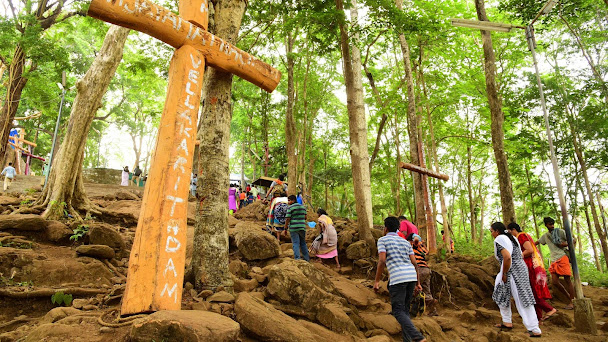The Kottukal Cave Temple
Kerala is a land which has many temples & most temples follow a certain style of architecture with stone base, beautiful sculptures, murals, tiled roofs. The temple near the village of Anchal in Kollam district is a unique place where there is no such structure but is a rock cut temple similar to the shore temples of Mahabalipuram. The temple called the Kottukal cave temple takes the name from the Malayalam words kothiya-kallu (rock-cut) & is in the centre of paddy fields. The rock which forms the temple seems like an elephant lying in the field & is dedicated to the Elephant God Ganapathi.
There are no official records of when or who built the temple & why a rock temple was made which needed exemplary craftsmanship, something not found in Kerala. Many historians however believe that the temple dates back to the 7th century & has been standing as it was made till today. The temple has two caves, one small & the other a bit larger both having monolithic Lingam of Lord Shiva. This cave resembles a structure of a usual temple with the Nandi at the entrance & has a Mukha Mandapam & four sided Garbhagriha. The smaller cave has the figure of Hanuman sculpted outside the entrance which resembles him as the vanara in Ramayana. The presence of Nandi & Hanuman at the same temple commemorates the episode in puranas which mentions the fight between Nandikeswar & vanaras. The central cavity houses the beautiful stone cut idol of Ganapathi. The idol of Ganapathi is not placed inside a cave but is more of a carving on the face of the rock. It is not quite known why these figures were carved but one cannot deny the exemplary craftsmanship of the people who worked in making these figures.
There is also another small rock which one finds next to the temple called the chummadupara which in Malayalam means a supporting rock. It is believed that the large rock was placed by Nandi and the smaller rock helped him relieve his pain on the head. A well found nearby is also important as the water is said to never dry up even in tough droughts & the rituals are done using the well water. The temple is open to visit for all & the rituals are simple.
This temple is taken care of by the archaeological department of Kerala as such a structure is difficult to find anywhere else in Kerala & its historic value makes one visit this temple. Come to this temple not more for its spirituality but to know more about our ancestors who built this temple here.




Comments
Post a Comment